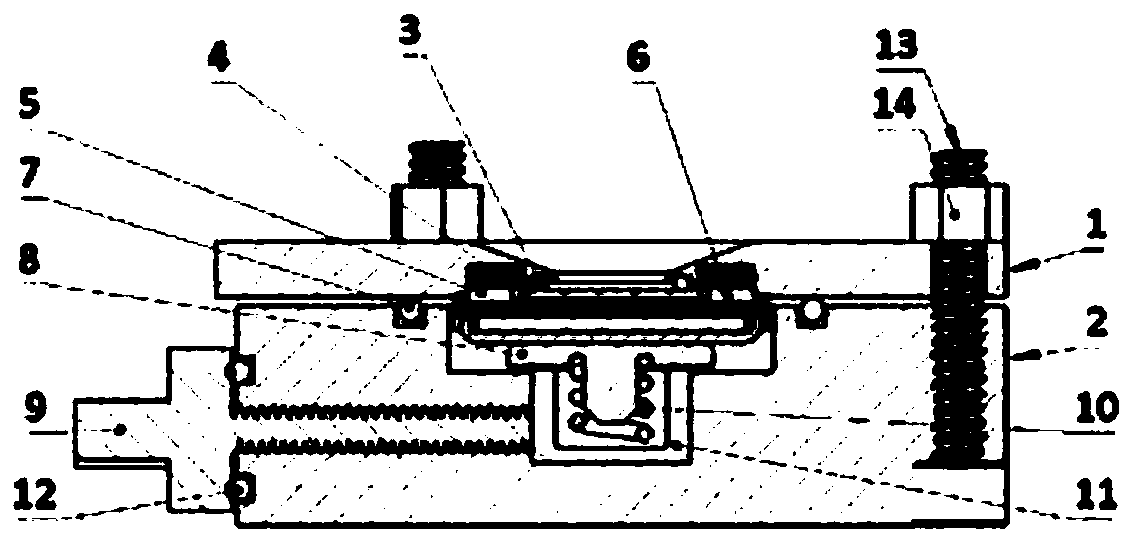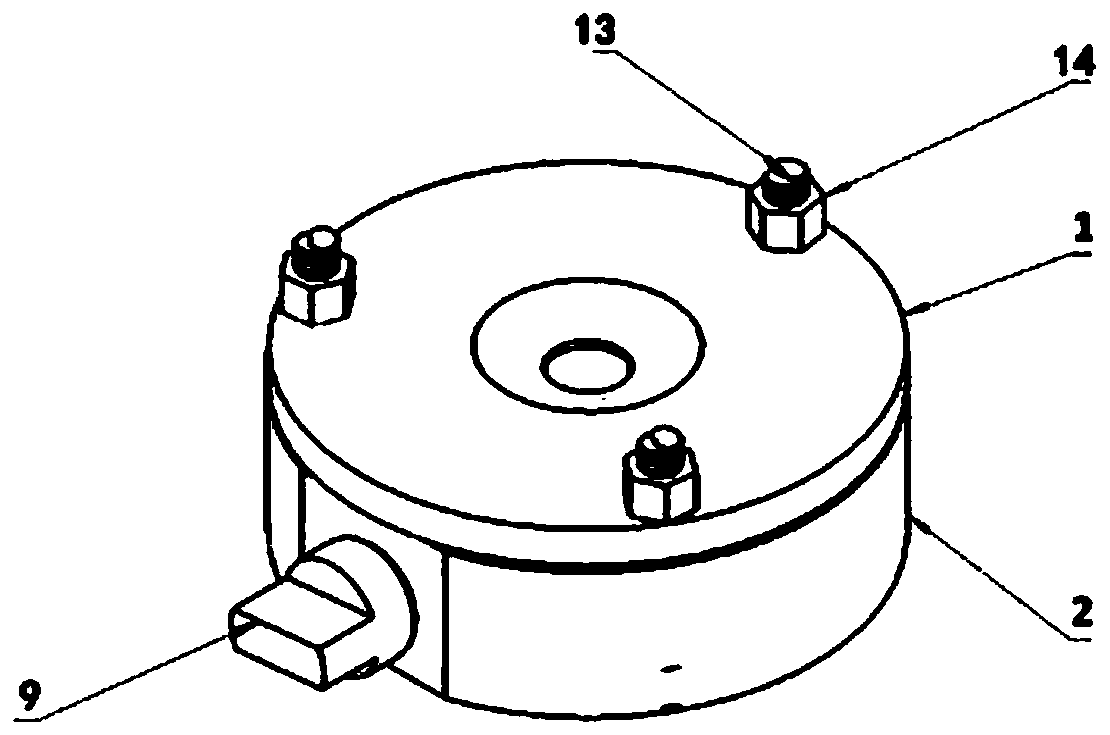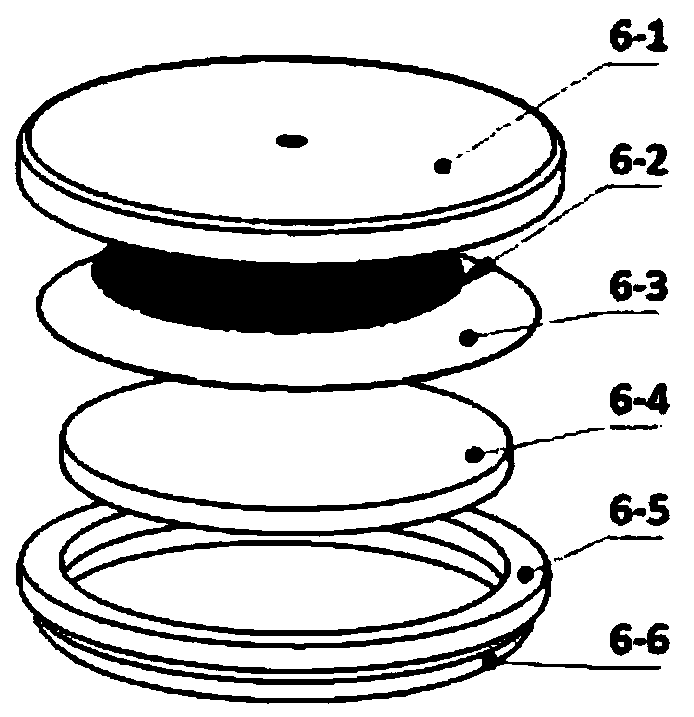In-situ Raman spectrum pool and electrochemical in-situ spectrum testing method
An in-situ Raman and spectral cell technology, applied in the field of electrochemical spectroscopy, can solve the problems of difficulty in evaluating the sealing performance of the spectral cell, the reliability of electrochemical testing performance, the replacement and cleaning of unfavorable windows and other components, and the pollution research system. Guaranteed long-term normal operation, easy reuse, and simple assembly process
- Summary
- Abstract
- Description
- Claims
- Application Information
AI Technical Summary
Problems solved by technology
Method used
Image
Examples
Embodiment 1
[0041] Such as Figure 1 to Figure 3 As shown, the present invention provides an in-situ Raman spectroscopic cell, which includes an upper plate 1 made of conductive material and a base 2 made of insulating material. Preferably, the conductive material for the upper pole plate 1 and the window fixing plate 5 is metal, and the insulating material for the base 2 is plastic.
[0042] The upper pole plate 1 and the base 2 overlap up and down and are tightly connected together by screws 13 and bolts 14 . The center of the upper plate 1 is provided with an inverted tapered hole groove, and the lower end surface of the inverted tapered hole groove is provided with a sealing groove, and the first sealing member 3, the window sheet 4 and the conductive The window made of material fixes the plate 5 to close the bottom of the inverted tapered hole groove. In this embodiment, the sealing member 3 is a sealing ring, and the sealing sleeve is connected to the outside of the lower half of ...
Embodiment 2
[0055] Taking nickel-manganese lithium-rich manganese base as the positive electrode material to be tested, the in-situ Raman spectroscopic cell of the present invention is used for testing as follows:
[0056] (1) Preparation of the electrode to be tested:
[0057] Mix nickel-manganese lithium-rich manganese-based positive electrode materials, acetylene black, and polyvinylidene fluoride (PVDF) in a mass ratio of 8:1:1, and use N-methylpyrrolidone (NMP) as a solvent to make a slurry, and apply it on the On electrode 6-2, dry overnight at 80°C in a vacuum oven.
[0058] (2) Assembly of in-situ Raman spectroscopy cell:
[0059] Such as image 3 As shown, the conductive upper cover 6-1, the electrode to be tested 6-2, the diaphragm 6-3, the lithium sheet 6-4, the second sealing member 6-5 and the conductive bottom case 6-6 are stacked in order to form a battery assembly 6. Put the battery assembly 6 into the electrode tank of the base 2, add electrolyte solution into the elec...
PUM
 Login to View More
Login to View More Abstract
Description
Claims
Application Information
 Login to View More
Login to View More - R&D
- Intellectual Property
- Life Sciences
- Materials
- Tech Scout
- Unparalleled Data Quality
- Higher Quality Content
- 60% Fewer Hallucinations
Browse by: Latest US Patents, China's latest patents, Technical Efficacy Thesaurus, Application Domain, Technology Topic, Popular Technical Reports.
© 2025 PatSnap. All rights reserved.Legal|Privacy policy|Modern Slavery Act Transparency Statement|Sitemap|About US| Contact US: help@patsnap.com



